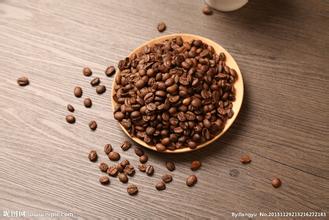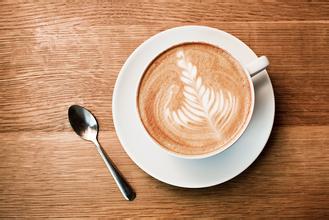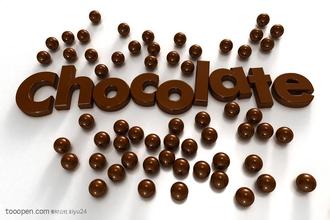What kind of coffee beans are just planted? What is the extract?
What kind of coffee beans are just planted? What is the extract?
Coffee beans basically grow opposite to each other. So one side of the coffee bean will be flat. This kind of coffee bean with one side, we call it "flat bean".
Some coffee fruits grow only one seed (5%-20% of the total), which is due to fertilization or environmental factors, resulting in a serious deterioration of the seed growth on one side, which looks round (in this case, the seeds on the other side will not be produced), this round coffee bean, we call it "round bean".
In the coffee bean selection process (the process of distinguishing the size and picking out the poor quality coffee beans), the "round beans" should be selected from the "flat beans". As the number of coffee beans is rare, they should be sold differently from the coffee beans that they are used to. Coffee beans in Brazil, Blue Mountain and other places are very famous, and the price is higher than that of coffee beans. But for farmers, there should be even coffee beans in a fruit, but only one has grown, which will greatly affect the output of coffee beans, so it is not a happy thing. Coffee fruit (coffee cherries) is oval, coffee flowers fall behind, and the fruit is only the size of a match. it will only grow bigger after 6 to 8 months of growth. The size of the coffee fruit varies according to the cultivation environment and variety. If it is Arabica, the fruit will be the size of 1.5~2cm, with a more cross-sectional diameter of 1 to 1.5 cm, while the fruit of Robasca will be slightly smaller than that of Arabica.
When the fruit is ripe, the pulp becomes very soft. The flesh of the coffee fruit is not thick, but it tastes sweet. In the harvest season, we can often see the children who come to help put the flesh into their mouths to eat.
After peeling off the pulp, you will see that there is a thin skin on the seed, which is the endocarp of the coffee bean, and the seed wrapped in the endocarp is also called "parchment coffee bean". There is also a sticky layer on the surface of the inner pericarp, which is called pectin. If you want to take out the coffee beans, you have to remove the pulp, pectin and endocarp.
In the coffee bean selection process (the process of distinguishing the size and picking out the poor quality coffee beans), the "round beans" should be selected from the "flat beans". As the number of coffee beans is rare, they should be sold differently from the coffee beans that they are used to. Coffee beans in Brazil, Blue Mountain and other places are very famous, and the price is higher than that of coffee beans. But for farmers, there should be even coffee beans in a fruit, but only one has grown, which will greatly affect the yield of coffee beans. After removing the peel, there are two coffee beans inside.
Two coffee beans with endocarp and silver skin
Internal structure of coffee fruit (coffee fruit includes exocarp, mesocarp, pectin layer, endocarp, coffee bean silver skin, endosperm, embryo. )
Detailed description of the internal structure of coffee beans (pectin layer, endocarp, silver peel, endosperm, cotyledons, Hypocotyl, radicle)

Important Notice :
前街咖啡 FrontStreet Coffee has moved to new addredd:
FrontStreet Coffee Address: 315,Donghua East Road,GuangZhou
Tel:020 38364473
- Prev

Introduction to different varieties and producing areas of coffee beans with different tastes
Coffee beans grind thick and fine taste different varieties produce area introduction French filter kettle, plug air, drip filter or mocha pot do not require high fineness of coffee powder. Knife milk grinder (commonly known as bean chopper or propeller grinder) can not adjust the scale, but to adjust the size of coffee powder according to the length of time, the size of coffee powder is uneven, so it is not suitable for making espresso. It is generally thought that as long as there is a strong one,
- Next

Description of characteristics and flavor of coffee beans in three major producing areas introduction of varieties treated in manor production areas
CubitaCoffee in Cuba, the cultivation of coffee is regulated by the state. The best coffee growing area in Cuba is located in the Central Mountains. Because this area not only grows coffee, but also produces quartz, crystal and other precious minerals, it is also known as Crystal Mountain. Crystal Mountain is adjacent to the Blue Mountains of Jamaica, with similar climatic conditions and taste similar to Blue Mountain Coffee.
Related
- Guji coffee producing area of Guji, Ethiopia: Humbela, Shakiso, Wulaga
- What is the most expensive variety of Qiloso in BOP multi-variety group?
- How to store the coffee beans bought home?
- Why are Yemeni coffee beans so rare now?
- Ethiopian Sidamo all Red Fruit Sun Sun Santa Vini Coffee beans
- SOE is mostly sour? What does it mean? Is it a single bean? what's the difference between it and Italian blending?
- Is Italian coffee beans suitable for making hand-brewed coffee?
- How to choose coffee beans when making cold coffee? What kind of coffee beans are suitable for making cold coffee?
- Just entered the pit to make coffee, what kind of coffee beans should be chosen?
- Can only Japan buy real Blue Mountain Coffee? What are authentic Jamaican Blue Mountain coffee beans?

